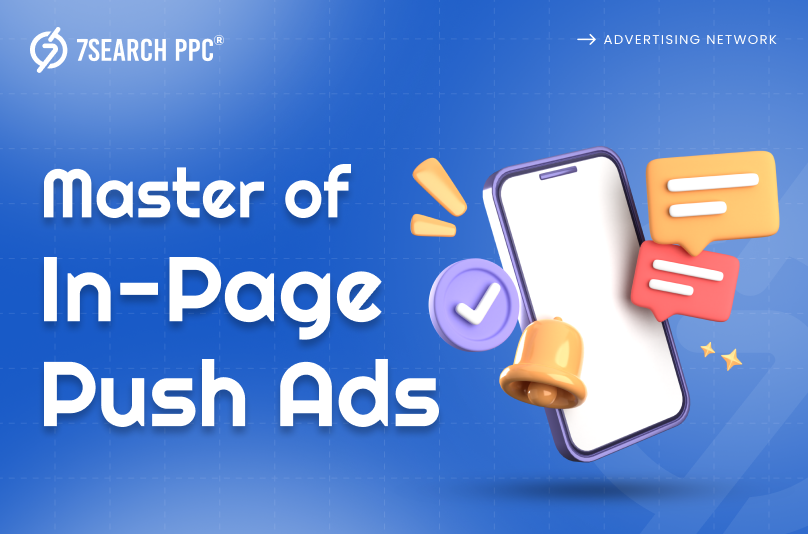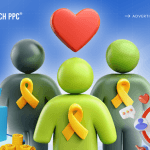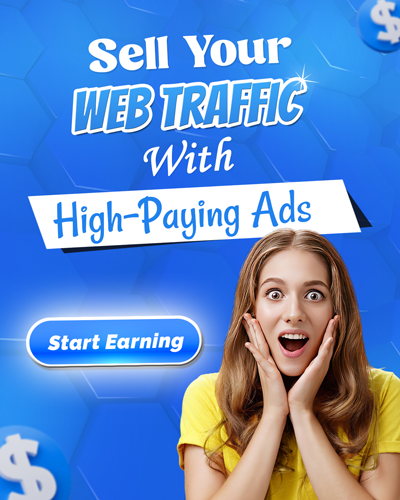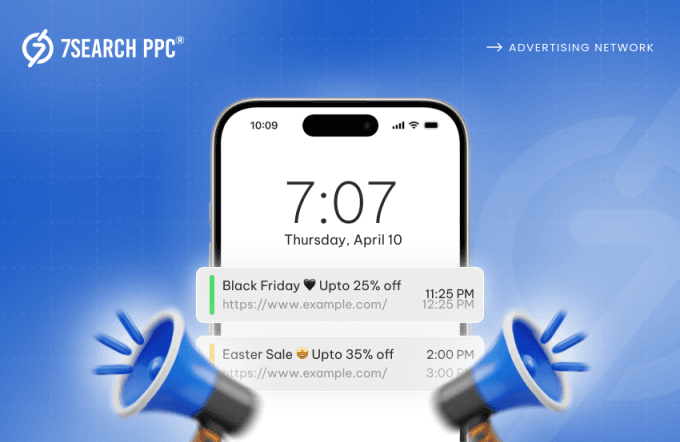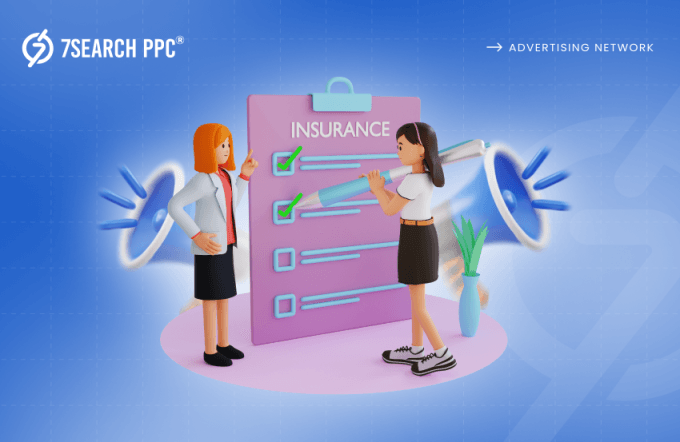Online sales depend on getting visitors to your website. It’s the lifeblood of any successful venture. Every business aspires to master the art of driving targeted in-page push traffic to their offerings. It’s not just about numbers; it’s about quality. Ensuring that the right audience is attracted to your platform can make all the difference.
Are you struggling to get the most out of your push campaigns? Do you want to reach an ideal audience and boost your conversions? In-page push (IPP) might be the secret weapon you’ve been missing.
Unlike classic push, IPP does not require any serious effort, allowing you to target users when they catch your push notifications. This means a massive pool of potential customers ready to engage with your offers.
This blog is useful for those who trust in-page push traffic for their targeted marketing needs or for those advertisers who are looking to explore a new, user-friendly, and potentially high-converting ad format.
So, readers, without further delay, let’s jump right into it and explore the power of in-page push ads.
Exploring In-Page Push Traffic: What It Means In Simple Terms
Many of you might get confused when you hear the term “in-page push traffic.” Many questions hit in mind, like what type of traffic is this? Is this traffic different from traditional push notifications? And many more. So, what exactly is this which is creating hype in the market?
Definition at a glance;
In-page push traffic refers to visitors who arrive at a website after clicking on an in-page push ad. These ads are designed to resemble real push notifications, often appearing at the top of the webpage or sliding in from the side. Unlike traditional push notifications, in-page push ads don’t require users to opt-in to see them.
This gives them a way to reach a wider audience, including users on devices like iPhones and iPads, where push notifications are restricted. Advertisers can target in-page push ads to specific demographics and interests, making them a potentially effective way to drive ideal traffic to a website.
Top Advantages Of In-Page Push Ads For Marketers
In-page push advertisements have become popular among advertisers because they offer several advantages. Here are some of them:
Wider Reach Without Subscriptions
In-page push ads do not require users to subscribe, unlike traditional push notifications. This removes a barrier and helps reach a wider audience who might otherwise ignore subscription requests. This is especially useful for campaigns targeting new visitors or those who are not familiar with your brand.
Ideal For Catching Attention
Users have become skilled at ignoring banner ads. In-page push ads imitate the appearance and style of system notifications, attracting attention and standing out from the crowd. This type of advertising nature can result in higher click-through rates (CTR) compared to traditional banner ads.
Works Seamlessly Across Browsers and Devices
In-page push ads are not affected by browser restrictions that can limit web push notifications. This ensures that your campaigns reach a wider audience, regardless of the browser or device they use. This is especially valuable for campaigns targeting mobile users.
Unobtrusive and User-Friendly
In-page push ads are created to be less intrusive than traditional pop-up ads. They usually appear as small pop-ups in the corner of the screen, minimizing disruption to the user experience. This can result in a more positive image of your brand and a greater likelihood of users engaging with the ad.
Opportunities For Cross-Selling and Upselling
In-page push ads are an ideal way to promote related products or services to people who are already visiting your website. By targeting users according to their browsing behavior, you can show them highly relevant upsell or cross-sell offers that are more likely to interest them and lead to additional sales.
What Sets In-Page Push Apart From Traditional Push Ads?
After reading this heading, you will ask how they can differ as their aim is the same: to grab user attention and drive quality traffic to the website. Friends, the approach in which both ads work makes all the real difference.
Traditional push ads are permission-based messages delivered directly to a user’s device, even when they’re not on the advertiser’s website or app. On the other hand, in-page pushes are confined to the browser. They appear as pop-up banners within the website itself, triggered by the user’s activity or when the user enters the site.
So, Which One Should You Choose? Here Is The Answer
The conclusion of this debate is that the key difference between traditional push ads and in-page push notifications is their reach and user experience. Traditional push ads have a wider reach as they can target users even when they are not actively browsing.
On the other hand, in-page notifications offer a less intrusive experience but are limited to users who are already on a particular website. They can potentially achieve higher click-through rates due to the user’s existing engagement with the relevant content.
How Advertisers Are Benefiting From In-Page Push Ads At 7Search PPC?
We have a research team at 7Search PPC that consistently monitors the performance of the IPP ad campaigns created by advertisers on our platform. They gather and analyze data related to the best-performing GEOs, verticals, and offers in the field of In-Page Push advertising. Our current observation shows amazing insights, which are given below.
•Windows/macOS- Strong performance noted in the United States, Brazil, South Africa, France
•Android- Engaged users in India, the United States, Nigeria, South Africa, Canada
•iOS- Significant activity was detected in France, the United States, Great Britain, Brazil, and India, with a notable increase in in-page push traffic.
IPP is an effective way to engage with users on iOS, Android, and Windows/macOS. This is important because reaching iOS users with push notifications has traditionally been challenging. IPP overcomes this limitation by serving as an ad format within the website itself without requiring a subscription.
55% of social bar traffic on 7Search PPC comes from Android. It’s clear that iOS and Windows/macOS make up the remaining 45%. IPP enables advertisers to target this additional audience segment and potentially generate more leads and sales.
Enhancing In-Page Push Engagement: Top Strategies

Attracting in-page push traffic might be easy if you find the right formula for crafting it. We approached some advertisers who created a successful in-page push campaign at 7Search PPC. The motive behind this approach is to find the perfect formula for creating an IPP ad campaign and share it with you all through this blog. Here are some key insights;
Target Wisely
Some ad networks that provide In-Page Push Ads enable precise targeting features for advertisers. It means that advertisers can target their ideal audience and show their IPP ads according to demographics, interests, and browsing behavior. You can use this feature wisely to ensure that your advertisements reach users who are most likely to convert.
We recommend that you target users who are actively browsing relevant content or who have previously shown interest in your offerings.
Compelling Creatives
The first impression is the last impression when you are seeking to attract in-page push traffic to your business website. You must include compelling visuals and impactful headlines in your IPP ad to capture attention in limited ad space. You should focus on utilizing clear, concise language to emphasize value and ignite user interest.
Powerful CTA
This is a major strategy that most of the advertisers at 7Search PPC point out. Look, you can successfully catch the attention of your ideal audience through your In-Page Push ad, but what comes next? Don’t leave the audience guessing about what to do next.
You must always include a clear and actionable call to action (CTA) that encourages them to click. The next question we asked our beloved advertisers is what type of CTA is appropriate in IPP ads? They answered that CTA’s should be specific, such as “Shop Now” or “Learn More,” and optimized for mobile viewing.
Optimized Timing and Frequency
If you continually show your IPP ads to an audience, they might get irritated. It’s not your ad’s fault; it’s human nature. You can also get annoyed when you see advertisements repeatedly. You must determine the best times to display in-page push ads based on your target audience’s activity.
Find a balance between frequency and user experience to avoid overwhelming users with excessive ads. This can help you impress your ideal audience, which will result in high in-page push traffic to your website.
A/B Testing and Optimization
What do you think these advertisers created a successful In-Page Push ad campaign in the first attempt? The answer is no. They preferred A/B testing, and after experimenting with various elements of their in-page push ads, they found the best combination for their ad campaign. Keep track of your In-page push ad campaign’s performance using analytics.
Try out different combinations of your elements, like ad creatives, messaging variations, and targeting parameters, to see what connects best with your audience. Analyze engagement metrics like CTRs and conversion rates to improve your campaign and get the best results over time.
Conclusion
In-page push ads are a great way to target website visitors without needing them to subscribe. They are less disturbing than traditional pop-up ads and can be effective on all devices and browsers. In-page push ads work by appearing as pop-up banners within the website itself, triggered by the user’s activity or when a user enters the site. This makes them a good option for campaigns targeting new visitors or those who are not familiar with your brand.
Advertisers can use these ads to target specific demographics and interests, making them a potentially effective way to drive ideal In-Page Push traffic to a website. So what are you waiting for? Create an in-page push ad campaign at 7Search PPC and enjoy amazing benefits.
Frequently Asked Questions (FAQs)
What is In-Page Push traffic?
Ans. In-page push traffic refers to visitors who arrive at a website by clicking on an in-page push ad. These ads resemble actual push notifications and are displayed on the webpage, usually at the top or sliding in from the side.
How do in-page push ads differ from traditional push notifications?
Ans. In-page push ads don’t require users to opt-in like traditional push notifications do. They reach a wider audience, including those on devices where push notifications are restricted, like iPhones and iPads.
However, both ads are used by advertisers to drive quality in-page push traffic to their websites.
What are the benefits of in-page push ads for advertisers?
Ans. In-page push ads offer various benefits for advertisers such as wider reach, attention-grabbing, less-intrusive, enhanced in-page push traffic and cross-selling and upselling opportunities.
How do advertisers benefit from creating in-page push ad campaigns at 7Search PPC?
Ans. Advertisers get various benefits from creating in-page push ad campaigns at 7Search PPC. It helps advertisers engage users on iOS, Android and Windows/macOS, overcoming the challenge of reaching iOS users with push notifications.
7Search PPC enables advertisers to target a broader audience which results in a quality in-page push traffic.
Which ad format is appropriate for driving quality traffic to a website?
Ans. Choosing an ad format is totally based on advertiser’s own preference. In-page push ad engages audience in the first attempt and helpful for advertisers to drive quality in-page push traffic to website.

